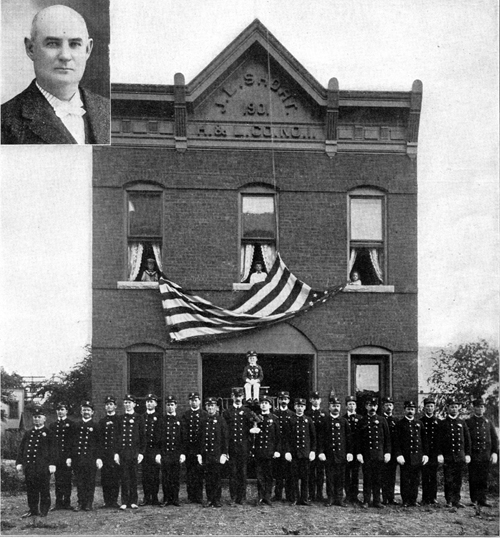 |
| J. L. Short Co. volunteers prepare to host the Tri-County Convention of 1902. Since purchasing their first hand pump in 1875, five companies of volunteers have protected life, limb and property while providing important social activities for the community for 125 years. |
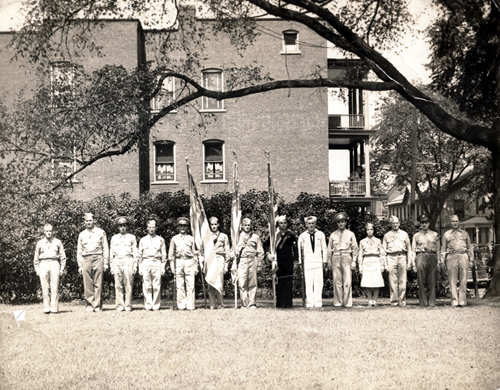 |
| Home from the war, veterans prepare an Honor Guard for the Feast of the Assumption Parade, the annual August Italian fest began in 1899. The highlight of the 3-day celebration begins with a street procession of the Virgin’s statue, followed by spectacular fireworks on August 15. |
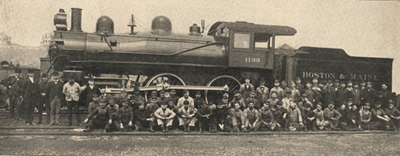 |
| First appearing here in 1835, the iron horse left its mark on the town. By the mid-1920’s, local yards were switching 4000 cars a day, making Mechanicville the third largest reclassification yard in the US. At its peak, the B&M and D&H’s combined employment reached 1100 prior to WWII. |
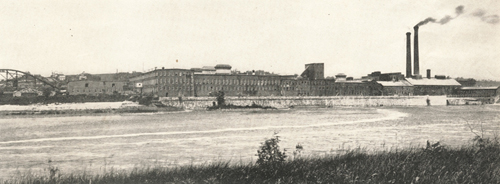 |
| City of Mechanicville – The Paper Mill-Westvaco’s 6 paper machines ran non-stop (“7-24-365”) to feed the printing presses of the nation’s leading publishers. Peak employment of 1350 after WWII made the plant the largest book paper mill in the world. It closed in 1971, 86 years after opening, ending both production and a way of life. |
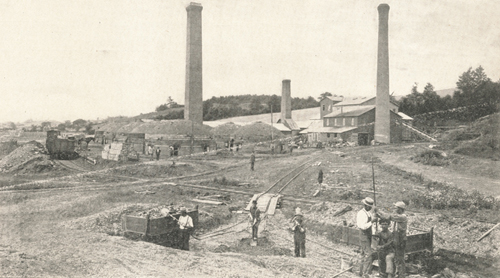 |
| City of Mechanicville – The Brickyard – Scratch today’s pavement and find bricks made by Italian immigrants who worked in 6 area yards at the industry’s peak before WWI. Local fire, paving and building bricks were sold throughout the US. Annual seasonal closures allowed immigrants to commute to Naples, but many settled here after the war. |
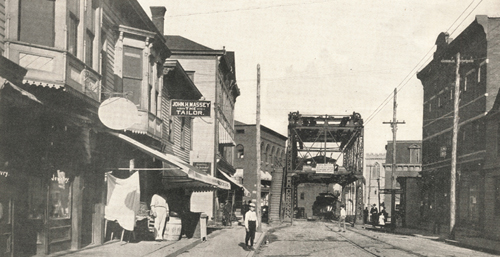 |
| City of Mechanicville – Park Avenue – Lift Bridge – look closely – you’ll see the trolley crossing the lift bridge on Park Avenue over the Champlain Canal (now Central Ave.). Electric trolleys, steam railways and the canal gave local firms outlets to markets for bricks, paper and lumber products across the nation. Notice — no cars in 1903. |
![]()
